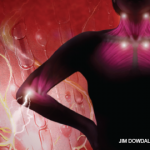In a study on which Dr. Kim worked, researchers found that if a patient had a score above a threshold on a sleep-related patient-reported outcome (the Sleep-Related Impairment scale, or SRI), they had a higher risk of having a clinically meaningful deterioration at the next visit. When comparing patient-reported outcomes to objective actigraphy measures, though, researchers found poor correlation between them, which should prompt the question of what is really being measured with the SRI, he said.2
In rheumatoid arthritis, sleep quality and rheumatic disease are frequently intermingled, said Patti Katz, PhD, professor of medicine at University of California, San Francisco.
A study of survey data from the FORWARD cohort of 4,200 RA patients found that a high risk of obstructive sleep apnea (OSA) or a diagnosis of OSA was prevalent in about 21% of the cohort, with 31% reporting restless leg syndrome.3
Short sleep of less than seven hours per night was seen in about three-quarters of the patients, and short sleep of less than 6 hours was seen in 43%.
In the RAZZ study, led by Dr. Katz, 116 patients were measured using actigraphy and 63 were measured with WatchPAT, which can produce an apnea-hypopnea index (AHI), a measure of OSA. Researchers found that more than 50% had moderate to severe OSA, but only about half of those patients had an actual OSA diagnosis. The study is not yet published.
Difficulties with sleep were very common. At baseline, over half had poor sleep efficiency, the ratio of time asleep versus the time in bed trying to sleep. Seventy percent had poor sleep efficiency—which can affect both the total time sleeping and the quality of sleep physiologically—at some point during the study, and more than 40% had poor sleep efficiency at every time point measured.
Among the WatchPAT cohort, almost everyone had either short sleep, OSA or low sleep efficiency; only 3 of 58 had none of those.
“This is a real problem,” Dr. Katz said.
In the study, researchers found the suggestion of an effect of OSA and ESR levels, and a clear effect on IL–6, when comparing those with and without moderate to severe OSA. They didn’t find a link between low sleep efficiency and RA when looking at single measurements at baseline, but among those who had poor sleep efficiency at any time point, they saw higher Clinical Disease Activity Index (CDAI) scores.


